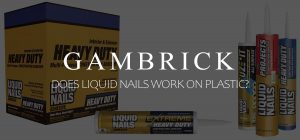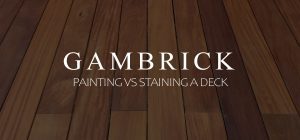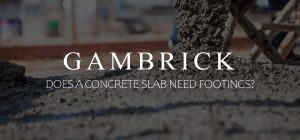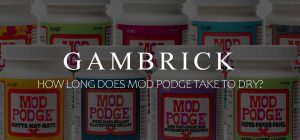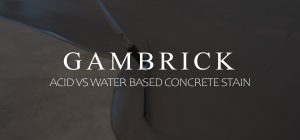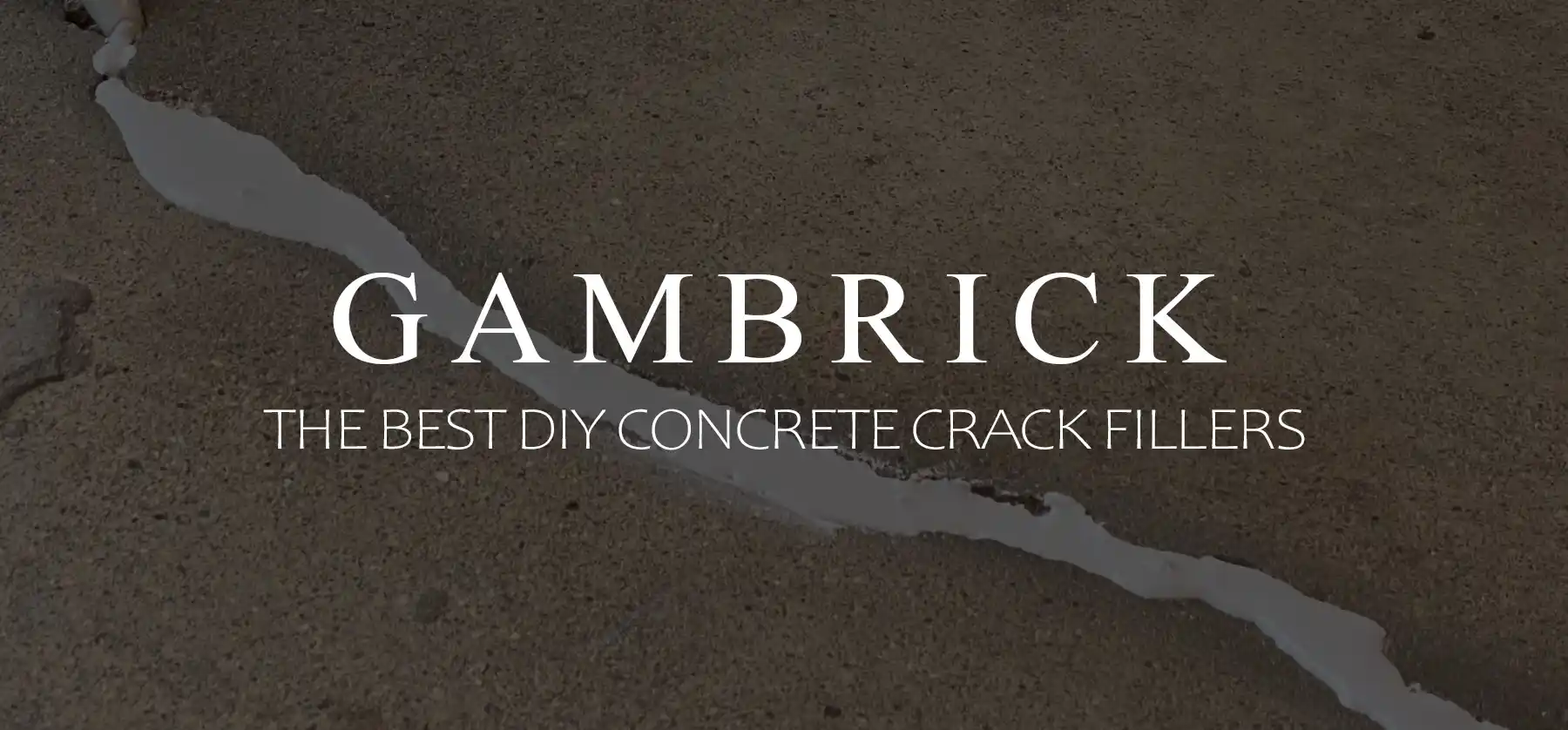
The Best DIY Concrete Crack Fillers
Concrete is a strong and durable material that can last for centuries when properly maintained. Almost all of our homes, buildings, sidewalks and bridges are built out of concrete. Because it’s such a dense and stiff material, it can crack. Some cracks happen naturally from things like weather, impacts or water while others are caused by poor construction. The best concrete crack fillers can repair those cracks by filling them up and binding them together. Using the right concrete crack filler can make cracks virtually disappear when properly applied. This not only improves the slab aesthetically but also lengthens it’s lifespan.
The best overall concrete crack filler is Sikaflex Self-Leveling Sealant. It works indoors and out on a variety of crack sizes, is easy to apply, and is flexible, which makes it great for slabs that expand and contract. But it’s expensive and usually has to be special ordered.
I’ve been a mason for over 25 years and can tell you from firsthand experience that when concrete cracks are left unrepaired they only get worse.
When cracks appear in your concrete slab, repair them right away with a crack filler to prevent moisture and debris from penetrating into the crack, which will eventually make it worse.
- A high quality concrete crack filler will fill the cracks and seal them against water, dirt and weeds.
- They smooth the surface to prevent tripping and prevent the cracks from getting worse.
I’ve tested dozens of concrete crack fillers over the years and have come up with a list of the best ones along with some tips, tricks and pros vs cons.
Cracks are a repair you should use the very best product to fix because it will save you money in the long run by preventing future damage.
The Best Concrete Crack Fillers
Concrete cracks happen for a variety of reasons. The most common cause is water or the freeze/thaw cycle. Other times the ground can settle or shift which causes cracks. Human error is another common cause of cracks we repair. If the concrete was mixed with too much or too little water it effects curing which creates weak concrete.
Concrete cracks aren’t all the same. Some concrete is interior and some is exterior. Even though the crack may be the same, the slab will face different conditions which means you need a different filler. The size of the crack matters too. Small concrete crack fillers are different than those meant for large cracks.
Whatever the cause and size of your concrete crack, I’ve tested a filler that can fix it.
Based on my testing, Sikaflex Self-Leveling Sealant is the best overall concrete crack filler you can buy right now. It’s easy to use and works indoors and out on a variety of crack sizes.
Here’s a quick list of the top concrete crack fillers followed by an in depth review of each.
- BEST OVERALL. Sikaflex Self-Leveling Sealant is the best overall concrete crack filler. But it’s expensive.
- BEST FOR FOUNDATIONS. RadonSeal Concrete Foundation Crack Repair Kit is professional grade.
- BEST FOR LARGE CRACKS. Red Devil 0644 Pre-Mixed Concrete Patch
- BEST FOR THIN CRACKS. Bluestar Flexible Concrete Crack Filler
- BEST SEALANT. Red Devil Masonry & Concrete Crack Sealant
- FASTEST CURE TIME. DRYLOK 00917 Hydraulic Cement
- BEST EPOXY. Simpson Strong Tie Crack-Pac Injection Epoxy
- MOST AFFORDABLE. Sashco 16210 Slab Concrete Crack Repair Sealant
- BEST DIY CONCRETE CRACK FILLER. Quikrete Concrete Crack Sealer
- HONORABLE MENTION. Damtite 04072 Concrete Super Patch Repair
1. Sikaflex Self Leveling Sealant
The Best Overall Concrete Crack Filler
This is my favorite concrete crack filler because it’s such a versatile sealant. On my jobs I need a product that can work on lots of different locations and crack sizes. Sikaflex works indoors and out and on large or small gaps. And it’s super easy and fast to use. Which makes is a great overall DIY crack filler.
The product can fill gaps up to 1½ inches wide on horizontal slabs like concrete floors, sidewalks, and driveways. Once fully cured, it stays flexible and water proof. This makes it great for wet areas including pools.
I love that it comes in a 10-ounce tube and fits in any standard caulk gun. Just like any caulk, you can cut the tip different sizes to adjust the flow. This is a big help if your repairing a cracked slab with different size cracks. You don’t need to buy more than one product.
Simply squeeze filler into the crack and let it self level. This is another feature I love. You don’t need any additional tools to create a smooth surface and it’s clean to work with because you don’t have to smooth it like caulk.
Once Sikaflex is fully cured, it can be painted, stained, or sanded. This is another great feature because many of the slabs I repair end up getting painted.
- Pros: Versatile, easy to use and very high quality.
- Cons: It’s expensive and has to be special ordered.
Summary: Sikaflex Self Leveling Sealant is expensive. It’s a premium grade product and priced accordingly.
2. RadonSeal Concrete Foundation Crack Repair Kit
The Best Overall Concrete Foundation Crack Repair Kit
Filling cracks in a concrete foundation is different than repairing a cracked slab. Foundations are structural and need much stronger fillers. Repairing a cracked foundation requires a specialty product like RadonSeal Concrete Foundation Repair Kit.
A 2 part solution of epoxy and polyurethane foam is what they use to seal the cracks. It fixes cracks up to ½-inch thick in foundations and concrete walls. I highly recommend using a system specifically designed for foundations if you have a cracked wall. Don’t use a floor sealer because they don’t have enough strength to properly repair the crack.
The kit includes:
- Two tubes of polyurethane foam for filling the crack.
- Injection ports for adhering over the crack.
- Two-part epoxy for sealing the crack before injecting.
Each kit contains enough material to fill cracks up to 10 linear feet in length.
Repairs help prevent the crack from getting worse and keep out water, insects, air and gases from penetrating the foundation. This keeps homes safe and dry.
Once RadonSeal is fully cured, it can be painted, stained, or sanded.
- Pros: Very strong and easy to use.
- Cons: It’s expensive and has to be special ordered.
Summary: RadonSeal Concrete Foundation Repair Kit is very expensive. It’s a professional grade product that my masons use to repair foundation cracks and is priced accordingly. But it’s also easy enough for a homeowner to use themselves.
3. Red Devil 0644 Pre-Mixed Concrete Patch
The Best Large Concrete Crack Filler
Repairing large concrete cracks or replacing a missing chunk of masonry requires a different type of crack filler. The best product I use for repairing large cracks is Red Devil’s 0644 Pre-Mixed Concrete Patch. It comes in a 1-quart tub and is premixed and ready for use.
Because a concrete patch comes pre-mixed in a tub, you need a tool to spread it. I recommend a small masonry trowel or putty knife. Scoop some out and push it into the crack. Then smooth the surface with your trowel or a sponge.
Red Devil Pre-Mixed Concrete Patch is great for large cracks in sidewalks, walkways, and patios. I also use it to fix vertical concrete surfaces. And it works both indoors and out.
Red Devil bonds really well, dries to a light concrete color, and won’t shrink or crack. This is important because the patch won’t crumble, crack, flake or fall out. I do construction for a living so my repair work has to be top quality and last. That’s why I use ed Devil Pre-Mixed Concrete Patch.
Once Red Devil is fully cured, it can be painted, stained, or sanded.
- Pros: Easy to use, bonds well, dries a nice concrete color and won’t shrink.
- Cons: Requires a trowel or putty knife to apply and some clean up. Doesn’t work well on small cracks.
Summary: Red Devil Pre-Mixed Concrete Patch isn’t that expensive costing around just $15 bucks a tub. But it’s a professional quality product that we use to repair non structural foundation and slab cracks. It’s very easy to use but requires some additional tools and usually clean up.
4. Bluestar Flexible Concrete Crack Filler
The Best Thin Concrete Crack Filler
Repairing thin hairline concrete cracks is a challenge because the cracks are too thin for regular fillers to penetrate. It takes a very thin liquid to work into and seal fine cracks. Bluestar Flexible Concrete Crack Filler is a liquid formula that’s thin enough to seep into very skinny cracks and seal them. It creates a long-lasting repair that remains flexible and strong in hot and cold weather.
Bluestar concrete crack filler comes in a 1 pound bottle with a nozel tip so you don’t need a caulk gun to apply it.
The product is very easy to work with. Simply remove the cap on the nozzle and squeeze the liquid over the crack. Then trowel it smooth with a putty knife while you push product down into the crack.
After it cures, the product can be painted.
Works on vertical concrete walls and flat slabs.
Repairs last and will keep bugs, weeds, and water from penetrating into or through the crack.
- Pros: Easy to use, repairs last, great for very fine concrete cracks.
- Cons: Even though you can use it to repair cracks as wide as 1 inch, I prefer other fillers for wider cracks.
Summary: Bluestar concrete crack filler is a great product for smaller hairline concrete cracks but not much else. I don’t like it as much as other fillers for larger cracks. It costs around $15 a bottle which isn’t much considering how much you get.
5. Red Devil Masonry & Concrete Crack Sealant
The Best Sealant
Red Devil Masonry & Concrete Crack Sealant is a good all around concrete crack filler. It’s cheaper than most of the other fillers and easy to work with because it it comes in a standard size caulk tube.
The product comes in a 10-ounce tube and fits in a standard caulking gun. Cut the tip to the size you want and squeeze product right into the crack. It’s textured like concrete so the appearance looks better if you paint the concrete after your repairs are done.
I’ve used it for sealing concrete cracks from about 1/16″ to 3/4″ and it worked fine. But I wouldn’t recommend it for really large or small cracks. The product isn’t thin enough to slip into hairline cracks and doesn’t hold well enough for wide gaps.
I’ve used it on flat slabs and vertical concrete steps and in both cases it worked fine.
Summary: The repairs I made lasted and kept water, bugs and weeds out. I recommend it when you need to make small to medium size concrete repairs on flat or vertical slabs.
- Pros: Easy to use and cheaper than the top fillers. Has a nice texture when dry.
- Cons: Doesn’t bond as strong as the best products. Won’t work on really small or large gaps. I recommend it for medium size cracks.
6. DRYLOK 00917 Hydraulic Cement
Best Cure Time
Drylok 00917 Cement Hydraulic is great when you have to fill concrete cracks in a hurry.
It’s a dry mix that sets within 5 minutes so you’ll have to work fast. It’s not great for really small cracks but works great on medium to large ones. And I like it to repair missing chunks of masonry because it has a great bond.
It’s suitable for a variety of masonry surfaces, not just concrete repair.
This hydraulic cement mix comes in a 4-pound tub. I use it to repair cracks in masonry, brick, and concrete surfaces. You can use it on both vertical and flat concrete, inside or out.
It’s strong enough to anchor metal, such as brick ties, to a concrete surface for a longer lasting repair. This kind of strength can come in handy for all sorts of projects.
Once fully cured, the material is extremely hard and durable. Water, gases, air, pests and weeds will easily be blocked. It can be sanded, stained and painted once cured.
Sold at Home Depot and Lowes.
Summary: Every time I’ve used this product it’s been great. But I mainly use it for larger crack repairs and not fine work. Because it’s a dry mix, you need a putty knife or trowel to apply and smooth it. I also recommend a sponge and water for smoothing and cleanup.
- Pros: Easy to use and really strong. Sold at Home Depot and Lowes.
- Cons: Doesn’t work for small cracks. Only sold in large tubs. Not the best choice for small repairs.
7. Simpson Strong Tie Crack-Pac Injection Epoxy
Best Epoxy Concrete Crack Filler
Simpson Strong Tie Crack-Pac Injection Epoxy is both strong and fast curing. This two-part epoxy can fix structural concrete cracks or anchor metal like lag bolts and other hardware into concrete. When hardened, it’s three times as strong as the concrete it adheres to.
It has a 20-minute set time and a 4-hour curing time which is great when you need to make concrete repairs and keep working.
Crack-Pac injection epoxy is designed to repair cracks in concrete ranging from 1/64″ to 1/4″ wide in concrete walls, floors, slabs, columns and beams. The mixed adhesive has the viscosity of a light oil and a low surface tension. This allows it to penetrate fine to medium-width cracks in dry, damp or wet conditions.
This two-part epoxy comes in 9-ounce tubes that fit into a standard caulking gun which makes it super easy to work with. The tube and nozzle they supply do all the mixing for you so you can’t make a mistake when applying it.
The cured epoxy is waterproof and fully submersible, and it works on sidewalks, driveways, concrete walls, foundations, and other surfaces.
Summary: I love Simpson Strong Ties line of concrete products. They’re expensive, but very high quality and professional grade. When I’m doing structural concrete repairs or anchoring metal to concrete, this is what I use. I highly recommend it.
- Pros: Easy to use and super strong. Fills concrete cracks and secures metal to concrete.
- Cons: Expensive.
8. Sashco 16210 Slab Concrete Crack Repair Sealant
The Most Affordable Concrete Crack Filler
Sashco’s Slab Concrete Crack Repair sealant is a great option if you have to fill a concrete crack on a budget. It’s cheap, works pretty good and is easy to use.
This filler is very flexible. It can stretch up to three times the width of the crack it repairs. Because of it’s flexibility, Sashco can repair cracks up to 3 inches wide on sidewalks, patios, driveways, slabs, and other flat concrete surfaces.
A 10-ounce tube of Sashco sealant fits in a standard caulking gun which makes it easy to use. It flows easily and self levels which makes it great for small or large cracks without trowels or putty knives.
Once cured, it remains elastic and flexible. This makes it a great choice for concrete slabs that move or go through regular freeze thaw cycles. It can be painted by not stained or sanded.
Summary: If you’re on a tight budget and need to fill a concrete crack, this is a good product. It’ easy to use and extremely flexible. And it can be used inside or out. The product is self leveling so just squeeze it into the crack and let it dry.
- Pros: Easy to use, cheap and self leveling.
- Cons: Not as strong as other fillers.
9. Quikrete Concrete Crack Sealer
Best DIY Concrete Crack Sealer
The Quikrete Concrete Crack Filler is a great beginner DIY crack filler. It comes in a bottle with a nozzle tip and doesn’t require a caulk gun or any other tools to use. It’s available and generally in stock at Home Depot which makes it very convenient.
It’s a great crack filler for small to medium size cracks. I’ve tested up to about 1/2 inch and it worked fine.
The thing I really like about Quikrete is that the product self levels and you can build up material over multiple applications. This makes it a great product for beginners because you don’t have to get the repair perfect the first time. Drip Quikrete sealer into the crack and let it self level. It’s thin and will work its way down to the bottom of the crack. Once dry, apply a second application right on top of the first. Keep repeating until the crack is full to the top.
Summary: A great beginner level concrete crack filler that’s easy to use, easy to buy and affordable. Just visit any Home Depot and pick up a quart for around $10 bucks. Remove the nozzle cap and drip product into the crack. Let it self level and dry. Repeat until the crack is full to the top.
- Pros: Great for small to medium size cracks. Easy to use. Available and affordable. Flexible.
- Cons: Not great for hairline or large cracks. Not the strongest most durable crack filler.
10. Damtite 04072 Concrete Super Patch Repair
Honorable Mention
Damtite 04072 Concrete Super Patch Repair is great for filling wide concrete cracks or areas with missing masonry. Large repairs like this are too tough for caulks and liquid fillers. This product is waterproof and nonshrink which makes it great for wider gaps.
The compound is applied using a trowel or putty knife. Then smoothed and cleaned with a sponge. Use it to repair cracked concrete from 1 inch to 3 inches wide.
This patch kit isn’t pre-mixed. It comes with 6 pounds of patching powder and 1 pint of liquid additive. This is a big plus because you can mix just as much as you need and then store the rest. And since it’s not pre-mixed it won’t dry out sitting in the garage.
One container will cover up to 3 square feet of patio, driveway, or other concrete surface at 1/4 thick.
Summary: If you need an affordable concrete crack filler designed for large applications, this is a good option. It’s also great for making repairs where pieces of masonry or missing. I like it a lot for old concrete steps repairs where chunks of concrete are falling off. It has a pretty strong bond and can be painted once dry.
- Pros: Great for large repairs. Has a decent bond. Good for indoor and outdoor use.
- Cons: Not a good filler for fine repairs. It’s only sold in large tubs which makes it hard to buy if you only have a small area to repair.
What To Consider When Choosing The Best Concrete Crack Filler
Concrete cracks happen for a variety of reasons and come in different sizes. Some are caused by water, weather or movement and others human error. Some cracks are wide and deep, others are as thin as a hair.You need to consider a few factors when choosing the best concrete filler for your repair.
Other things also matter like if the concrete is inside or out and what the weathers usually like. Also consider how much strength you need, is the concrete structural and do you need flexibility.
Here’s a list of common concrete cracks and why they happen:
- Plastic Shrinkage Cracks: These are light and thin web like cracks that result from too much water in the concrete mix. We sometimes refer to these as spider cracks.
- Expansion Concrete Cracks: Expansion cracks happen when concrete surfaces expand from higher temperatures. This expansion can cause two slabs to rub against each other and pop up or heave out of place causing cracks.
- Heaving: Concrete cracks caused by heaving, or the moving of concrete or soil, is generally caused by expansion and contraction r the freeze thaw cycle. These actions create long narrow cracks.
- Settling: Concrete cracks due to settling result when there’s too much space between the soil and concrete. This void causes the concrete to crack and become uneven. These cracks can be wide and deep.
- Drying Cracks. If concrete doesn’t cure properly it can crack. This is usually caused by too much or too little water in the mix or weather condition at the initial pour. These cracks appear very small and there are usually lots of them.
By determining the nature and size of your concrete slab’s cracks, you can choose the right concrete crack filler for the job.
Below we’ll discus the different types of concrete fillers along with what they’re best at repairing.
Type Of Filler
Concrete crack fillers come in a few types meant for different applications and crack sizes. Some are better for a particular type of concrete repair than others.
- Concrete Crack Sealants & Caulks: These are the most common product used to fill cracks in concrete. They’re easy to use and come in tubes that work with standard caulk guns. Simply cut the tip and squeeze product into the crack. Both do a good job of sealing the crack against water and bugs. Caulks tend to dry faster but are flexible but sealers are generally stronger and last longer.
- Fast Setting Cement: If you’re in a hurry, use a concrete crack filler that sets up fast. These products generally come as a bag of dry mix that you mix yourself with water. They’re excellent for fixing large cracks but not great for thin ones.
- Patch Compounds: These work like fast setting compounds but come premixed. They’re a good choice for repairing larger wider cracks.
- Hydraulic Cement: Available as a dry mix or premix that you can apply to concrete cracks frequently exposed to water. Great for pools, foundations and other outdoor concrete structures.
- Concrete Resurfacer: A standard mix of concrete with some additional polymers that increase its strength. Because of the polymers, resurfacers can be applied very thin over an entire surface which fills all the concrete cracks at once.
- Epoxy: A combination of compounds that when mixed together are waterproof and super strong.
Concrete Crack Width
The width of the crack is a huge consideration when choosing the best concrete crack filler. Thin cracks need a different product than a thicker wider crack. In most cases, the best product for filling large concrete cracks won;t even work on a thin one.
For hairline cracks, choose a liquid sealer or a thin caulk. They both flow easily into the crack and fill it.
For medium-size cracks about ¼ to ½ inch, use a thicker filler. A heavier caulk or patching compound both work great.
For larger cracks, quick-setting concrete or a patching compound are generally the best. A standard concrete mix, mortar or grout might also work.
For structural concrete cracks,use a two part epoxy concrete crack filler. They’re great for structural applications or when you have to secure metal to concrete.
For an entire floor, use a resurfacer. Apply a thin coat to the entire slab to fill all the cracks at once.
Weather Resistance
All the best concrete crack fillers are weather resistant and able to keep water out.
Water can penetrate into the crack and degrade the concrete over time. This causes cracks and deterioration.
- Use sealers and caulks to keep water out of small concrete cracks.
- Use patch kits or compounds for larger cracks.
Keeping water out is very important in colder climates that deal with a freeze/thaw cycle. When water penetrates into a concrete crack and the temperature drops below freezing, that water turns to ice and expands. This creates a lot of pressure that can crack open a concrete slab. It can also cause spalling, flaking and deterioration. And if that water should get to rebar or wire mesh it can also cause rust.
To prevent damage caused by the freeze/thaw cycle, always seal concrete cracks with a filler.
Curing Time
Each concrete crack filler has its own curing time. This is essentially the time it takes to fully dry and be ready for foot traffic or more work.
Some products also have set times, which means it’s not fully dry but can usually be walked or worked on. This is usually true of wetter fillers that dry just enough to become a solid.
Most concrete crack filler will set within an hour and cure within a 2-4 hours. If the label doesn’t list a cure and set time, tough the product with your finger to test out how hard and tacky it is. When in doubt, wait a little longer.
When a filler requires mixing with water, the amount of water you use will effect the products set and cure time. Always use the recommended amount of water to mix the product.
Before starting a concrete crack repair, consider the weather and temperature. Fillers will dry faster in warmer weather which can cause cracks. It’s best not to use fillers on especially hot or cold days or when there’s a chance of rain.
Mixing
Most caulks, sealers, and patches come premixed. But some dry mixes require water and hand mixing to reach the desired consistency. Always follow mixing directions as closely as possible. I don’t recommend over watering the mix because it weakens it, but in some cases it may be necessary to fill a thin crack. You could also widen the crack a little in order to use the recommend amount of water. This is what I usually do.
When using an epoxy, the caulk tube’s self mixing nozzle will do the mixing for you. As you squeeze the material out of the tube, it will mix itself. Epoxies harden and become waterproof super fast so work quickly once you apply it.These are great for concrete foundation repairs or when you need to secure metal to concrete.
Application
There are a few different methods for applying the best concrete crack fillers.
Liquid fillers come in small containers that generally have a nozzle. They’re easy to drip right into the concrete crack.
Caulks & Sealers are applied with a caulking gun for small to medium-size cracks. Many of these products are also self-leveling so you don’t have to smooth them out with your finger or another tool.
Concrete mixes & Patches come dry or premixed. They’re great for larger wider concrete cracks. I recommend applying them with a trowel or putty knife. Push material hard into the crack and then smooth the surface. Clean excess filler with a sponge and water.
Resurfacers are very thin and apply evenly over an entire floor to fill all the concrete cracks at once. They require a float to apply.
Epoxies come in a caulk tube with a special self mixing nozzle. You apply them right into the crack just like any other caulk.
Choosing The Best Concrete Crack Filler
Lets look at what makes a concrete crack filler the best choice for a particular type of job. Because there’s no one size fits all answer. Some crack fillers are definitely better for different types of cracks.
Concrete crack fillers come in a variety of product sizes, levels of strength, durability, cost, strength and ease of use.
Cost
Start by setting a budget for your concrete crack repair project. Everyone wants to save a few bucks here and there, but that doesn’t mean buying the cheapest crack filler on the market. Some are better designed for smaller cracks, while others are made for more extensive repairs.
If your repairs are just cosmetic, you can go with a cheaper filler. But if the cracks are hazardous or structural, spend the extra money and buy something strong.
Estimate how much product you’ll need based on the extent of your cracks. This is important because you don’t want to buy too much or too little filler.
Don’t forget to clean the cracks before you fill them. This can mean additional costs if you have to rent a pressure washer. It’s a bad idea to apply filler to a dirty crack because it won’t adhere properly.
Some concrete crack fillers also require extra tools to apply, smooth and clean them. Usually this is a putty knife or trowel and a sponge. If you don’t own them then this will add even more to the cost of repairs. I also like to tape the sides of the crack with painters tape when I fill a crack to keep excess off the concrete slab.
Crack Severity
Even if you have lots of cracks, you may still only need a small amount of crack filler.
The depth of the crack is just as important as their width. In some cases, a wide but shallow crack will take less filler than a narrow but deep crack. Do your best to estimate how much product you’ll need to fill them all from bottom to top.
Don’t skimp on the fill. Some people think they can get away with just filling the top of the crack but product should go all the way to the bottom. If you don’t fill the entire crack, the repair will be weak and may crack again.
A Tube Or A Tub
Crack fillers come in a few different container designs.
- Tubes: Some crack fillers come in tubes that you can apply with a caulk gun. These are generally like a caulk in consistency. Squeeze product directly into the crack. I like this type because the product work in a wide variety of applications and crack sizes.
- Bottles: Finer liquids generally come in a bottle with a nozzle tip. Remove the cap and rip filler liquid into the crack. These are usually best for very fine cracks.
- Tub: For larger cracks you need a compound the comes in a tub. These are best for medium to large size concrete crack repairs.
It’s OK to mix and match products. If you have a combination of hairline and wide concrete cracks. Use a tub with compound to repair the wide cracks and a bottle for the small ones.
Experience
Consider your level of experience with concrete repair because some products are easier to use than others.
If you’re a beginner, I’d stick with premixed products. The kind that come in a bottle or tube are generally easier to use because all you do is squeeze product into the crack and smooth the surface. In some cases the product even levels itself so you don’t even have to worry about smoothing. The less you need to do the better.
Compounds that come in a tub are a little harder to work with. You have to apply product into the crack with a trowel or putty knife, smooth the surface and then clean excess. It’s not that hard once you get the hang of it but it’s definitely harder than simply squeezing or dripping product into a crack.
No matter your experience level, make sure to get product to the bottom of the crack. This creates the strongest and most durable bond. If all you do is repair the very top of the concrete crack, it’s more likely to crack again.
FAQs About Concrete Crack Fillers
Here are a few of the most common questions I get asked about concrete crack fillers. if you have any more let me know and I’ll post the question and answer below.
Q. How do you fill large cracks in concrete?
By larger, most people mean wider. These cracks require a thicker compound like fresh concrete or a patching compound. Fillers designed for smaller cracks aren’t strong enough for wide gaps.
- Clean the crack with a stiff masonry brush and vacuum or blow out dust from the crack. Don’t apply filler to a crack with dust or debris in it because it won’t bond correctly.
- Use a trowel to push crack filler into the crack. Push hard so it reaches the bottom.
- Trowel over the surface to smooth out the filler.
- Use a wet sponge to clean off excess filler.
- Allow the compound to dry.
Q. How do you fix hairline cracks in concrete?
Fill a hairline crack with a thin liquid crack filler. Squeeze filler over the crack and let it seep in. You can also use a small putty knife to push compound into the crack.
Q. How long does concrete filler take to dry?
Drying time depends on the material, the width of the crack, and the temperature. Some fillers dry in under an hour, while others can take 24 hours to cure. But on average, crack fillers dry in 1 to 4 hours.
Dry time is different than cure time. Some crack fillers can be dry enough to work and walk on but still not fully cured.
Q. How do you remove concrete crack filler?
The easiest way to remove concrete crack filler is with an angle grinder and a concrete blade. The best concrete crack fillers bind string and won’t be easy to remove. If they were, they wouldn’t be on the list.
Summary: The Best DIY Concrete Crack Fillers
Concrete is a strong and durable material that can last for centuries when properly maintained. Almost all of our homes, buildings, sidewalks and bridges are built out of concrete. Because it’s such a dense and stiff material, it can crack. Some cracks happen naturally from things like weather, impacts or water while others are caused by poor construction. But whatever the reason, the best concrete crack fillers can repair those cracks in foundations, driveways, sidewalks, patios, steps and more. Using the right concrete crack filler can make cracks virtually disappear. This not only improves the slab aesthetically but also lengthens it’s lifespan. When concrete cracks are left unrepaired they only get worse.
Based on our testing, Sikaflex Self-Leveling Sealant is the best overall concrete crack filler you can buy right now. It’s easy to use and works indoors and out on a variety of crack sizes.
Here’s a quick list of the top concrete crack fillers followed by an in depth review of each.
- BEST OVERALL. Sikaflex Self-Leveling Sealant is the best overall concrete crack filler. But it’s expensive.
- BEST FOR FOUNDATIONS. RadonSeal Concrete Foundation Crack Repair Kit is professional grade.
- BEST FOR LARGE CRACKS. Red Devil 0644 Pre-Mixed Concrete Patch
- BEST FOR THIN CRACKS. Bluestar Flexible Concrete Crack Filler
- BEST SEALANT. Red Devil Masonry & Concrete Crack Sealant
- FASTEST CURE TIME. DRYLOK 00917 Hydraulic Cement
- BEST EPOXY. Simpson Strong Tie Crack-Pac Injection Epoxy
- MOST AFFORDABLE. Sashco 16210 Slab Concrete Crack Repair Sealant
- BEST DIY CONCRETE CRACK FILLER. Quikrete Concrete Crack Sealer
- HONORABLE MENTION. Damtite 04072 Concrete Super Patch Repair
If you have any questions about concrete, email or leave a comment below.

John Mazzuca | About | More Posts |
Custom Home Builder
John Mazzuca is a custom home designer and builder at Gambrick with over 25 years experience in the construction industry. John has designed, built and/or remodeled hundreds of homes, small buildings, and commercial projects. He writes about business, real estate, home building, and household electronics. His work has been featured in Fox Business, Better Homes & Garden, House Beautiful, and more.
















